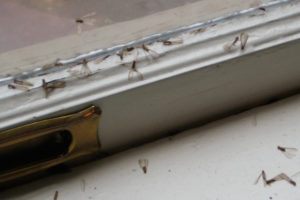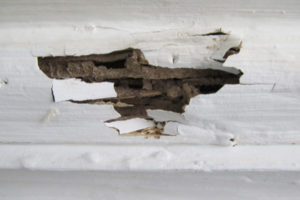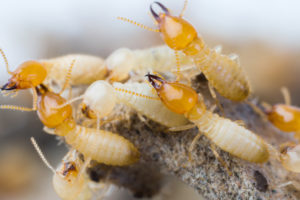
Imagine.
A bright, warm spring morning after a drenching rain shower. You’re perusing the morning paper on your iPad, sipping a cup of coffee, when, out of the corner of your eye, you notice a small insect land lazily on the nearby window sill.
Where did that bug come from? Wait a second, that bug has lots of friends!
Termites are Your Quiet Natural Disaster
Termites are just bugs, right?
Wrong.
This may sound crazy, but termites cause more damage to homes in the US than tornadoes, fires and earthquakes combined.
The National Pest Management Association (NPMA) estimates that termites cause $5 billion in property damage annually.
Because termites are hungry 24×7, damage to wood near and within wood structures can occur in the blink of an eye. An average-sized termite colony can consume 1 foot of a length of 2×4 in just six months.
WDIs, WDOs, and Other Worrisome Woes
The majority of termite inspections performed as part of a real estate transaction are based on the nationally recognized guidelines of the NPMA. However, the scope of inspections can vary based on individual state requirements; in such cases, inspections are conducted according to the specific requirements of a state’s Pest Control Board. There are 14 states that consider more than just wood-destroying insects.Pest Control Boards in such states also expect inspectors to be on the lookout for Wood-Destroying Organisms (WDO) or fungus.
How to Minimize the Risk of a Termite Infestation

There are many steps homeowners can take to help to prevent termites from infesting their properties.
- Minimize Moisture – Termites love moisture. Therefore, reduce or eliminate moisture in and around the property, including diverting water away from the home’s foundation by installing properly functioning downspouts, gutters and splash blocks.
- Minimize Moisture – Say what? Seriously, we know we’re being repetitive but if you have a crawl space, make sure it’s properly vented to reduce humidity.
- Trim Everything – Trim vines, hedges, and other vegetation to prevent blockage of exhaust vents.
- Keep the Structure Clear – Remove old form boards, grade stakes, tree trunks and roots near a structure, as these could attract termites and draw them closer to the home.
- Mind the Gap – Maintain at least an 6” gap between soil and any wood portions of the home.
- Remain Vigilant – We know you’re busy, who’s not? Drop the Netflix for five minutes and go outside to inspect the foundation for signs of termite damage or infestation.
Who Needs a Termite Inspection?
Governmental authorities are increasingly concerned about protecting consumers who are purchasing homes and have been leaning toward more stringent inspection requirements.
In addition, lending institutions are becoming more cautious with regards to clean “bills of health” with respect to termites. To satisfy lender concerns, homeowners often need to provide a clearance letter to the bank or mortgage company with confirmation that there are no visual signs of termites, and that there are minimal conditions conducive to termite infestation.

When the inspector finds evidence of a subterranean termite infestation, the inspector should recommend treatment even if there’s no sign of active infestation in the structure because termites are persistent and, once a property has been infested, there is a higher likelihood of a re-infestation.
What Actions Should You Take?
Termites can’t be effectively treated by a homeowner.
We recommend that all homes which are part of a real estate transaction have a comprehensive termite inspection performed by a qualified professional because it is the best way to ensure that a possible infestation is discovered, treated and documented for proper disclosure to interested parties.
Trained and licensed pest control professionals assess each infestation individually and are trained to recommend the most effective treatment plan. The type of treatment depends, of course, on the severity of the infestation, the species of termite, and the location and construction of the home.
“Do It Yourself” treatments may be able to address some live insects; however, such treatments are akin to using a Band-Aid when a tourniquet is required. DIY treatments will not eliminate the entire infestation or the source of the infestation. Only pest control professionals have the training, expertise, and technologies to completely eliminate a termite infestation.
Save Yourself from Disaster
We love asking pest control professionals to help fix a bug problem.
But we’re not super excited about asking a pest control professional to inspect for termites. We just think there may be a conflict of interest.
Schedule a US Inspect Termite Inspection today or bundle it with your next home inspection. We’re experienced. We’re licensed, as required. And best of all, we’re unbiased – we won’t try to sell you a termite treatment or monthly pest control service.
